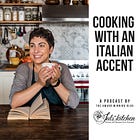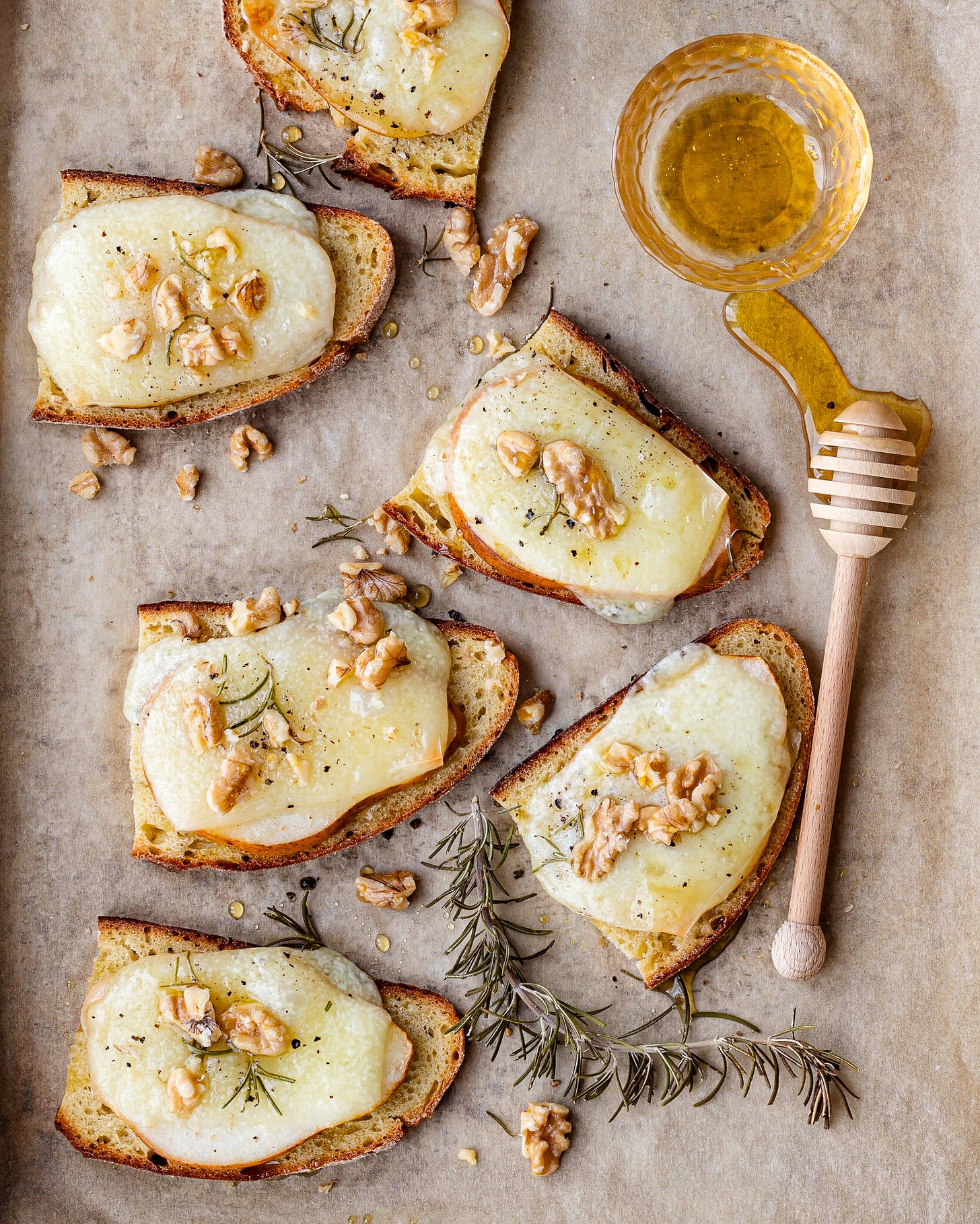Ciao, and thank you to the new subscribers who joined us recently. Make yourself at home and take some time to introduce yourself here. I’m so happy to have you onboard. To you, who keep reading, commenting, and sharing, thank you for being here, it means to much.
I come to your mailbox on a Thursday morning at the end of a busy week full of cooking classes with a recipe I’ve been making often recently. Add pears and pecorino to your shopping list for the weekend!
“Al contadino non far sapere quanto è buono il cacio con le pere.”
This is an old Italian saying, meaning: don't let the farmer know how good the cheese with pears is. Behind its prosaic theme, it tells of a social clash between peasants and the well-off, where cheese is the point of contention.
Between the Middle Ages and the Renaissance time, cheese was considered a peasant food, something relegated to the tables of farmers and shepherds. When it eventually gets into noble banquets, it acquires a different status. But those were times when each social class had a specific diet, that would tell a lot about who they were, what they could afford, and what was suitable for them.
To admit cheese to a wealthy table, it had to be associated with something luxurious, and therefore refined, perishable, and not necessary. Pears were the perfect actors to dignify the cheese, giving it the noble image it did not have before. As a consequence, in the XVI century, the privileged classes tried to keep this pairing secret, giving rise to this popular proverb. But it was a vain attempt, as the knowledge of the land and its products was already in the hands of the farmers.
Since then, the association of pear and cheese has been a mental, linguistic, and gastronomical commonplace in the Italian, French, and English cultures. So, how to disagree with it, when pears and cheese make such a delightful marriage?
Pear and cheese can be a quick, healthy afternoon snack: a crisp, juicy slice of pear and a wedge of Parmigiano-Reggiano, something I grew up with, and a habit I’m passing on to my daughter Livia, too. They can close a meal with a simple, sweet note, or open it when turned into a crostone, as in the following recipe.
Cacio e Pere. The Many Ways of Combining Cheese and Pears
Try the cheese and pear combination in a risotto. Cook the rice following the basic method (listen to our podcast episode about risotto here). When the rice is almost ready, add a finely diced pear, then cream the risotto with a handful of grated pecorino. You can make it even richer by melting some taleggio or fontina in the risotto at the very last minute.
If you are an enthusiastic baker, experiment with focaccia. This is a great idea to open a meal, served alongside a cheese board as an appetizer. Line the focaccia with thinly sliced pears just before baking it. When the focaccia is almost ready, crumble some pecorino, or aged provolone, and add some rosemary and sage. Bake just until the cheese is melted. Have a look at the recipe below for an idea of the method and use of toppings.
Pears work extremely well with ricotta, too, and they can become the filling of ravioli, plump fresh pasta parcels, dressed with brown butter, crisp sage leaves, and crumbled walnuts.
How not to mention desserts? Make a crostata (use the pasta frolla in this recipe) and blind bake the shortcrust shell (as in this crostata). Opt for a ricotta filling instead of jam, then top the ricotta with slices of pear. Dust with sugar and cinnamon and bake until the pears are nicely caramelized.
And if you have some pears left that are a little too ripe, you can make a cake with them that fits in perfectly with the rhythm of the weekend (but Livia loves it as an after-school snack).
Further readings
- ’s plum pear galette. This galette is what you want to bake right now. This galette is a memory of my grandmother, though she never made a galette to my knowledge. It’s made from the knobbly pears that grow on a little tree we planted out front when my daughter was young. I realized while eating it that this nubby, crumbly crust—with its bit of almond flour and tender texture—would make an equally delicious top to a plum and pear cobbler.
- Kitchen Project #117: How to Pair a Pear. So, what makes a classic pair for a pear? I asked the question on my Instagram story, and there were a few popular answers: Hazelnuts, apples, cardamom, chocolate, ginger, vanilla, rum, cheese (goats, blue) and honey were all suggested multiple times. And I agree, all of those combinations sound great. Is there a rhyme or reason?
RECIPE - Pecorino Cheese and Pear Crostoni
I reintroduced these pear and pecorino crostoni in the past weeks during our cooking classes, a seasonal appetizer that is substituting fried zucchini blossoms, tomato and mozzarella caprese salads, and prosciutto and melon.
Prepare the crostoni in advance, and stash them in the oven when you’re almost ready to eat: it could be a treat for dinner, or a quick appetizer for a gathering with friends. When you smell the roasted rosemary and the melting cheese, they are ready.











